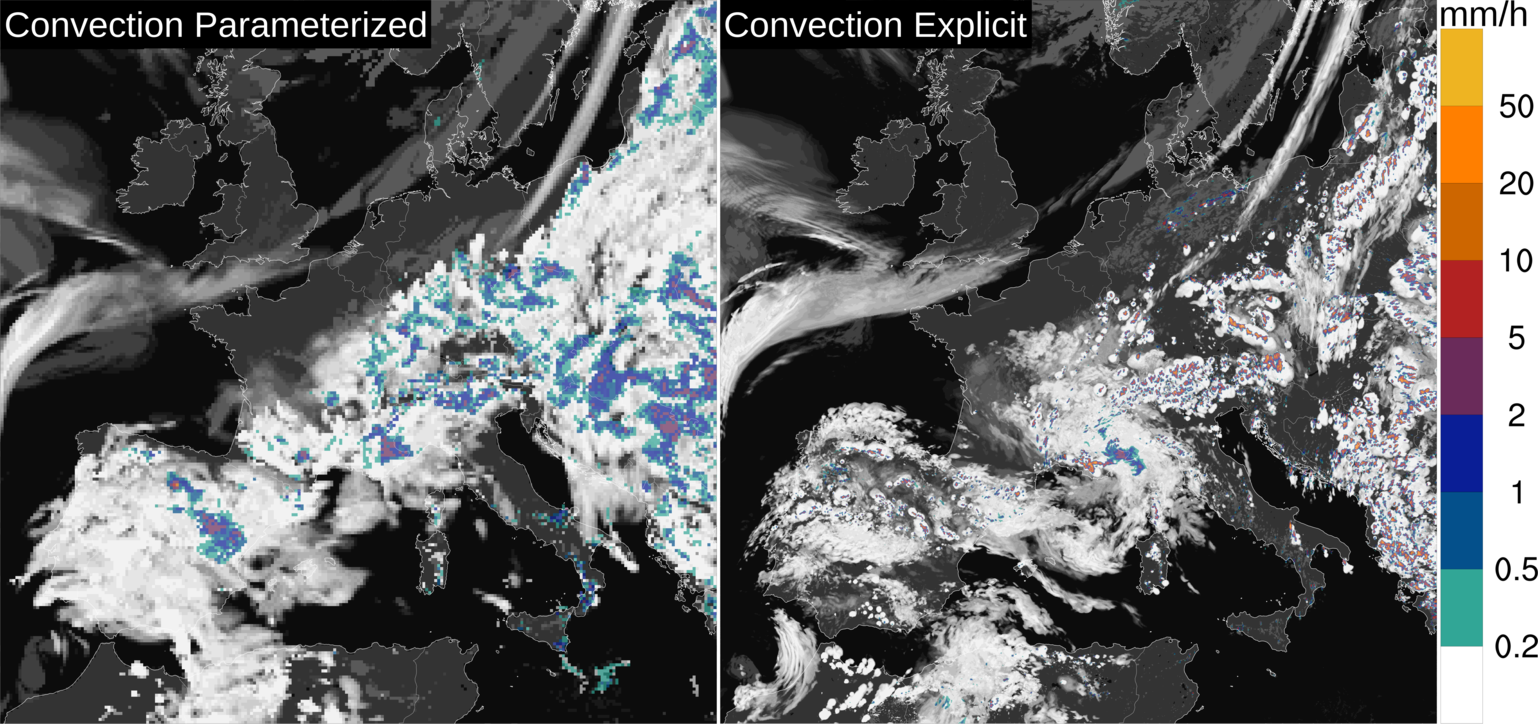More accurate climate models on new supercomputers
D-USYS
With high-performance computers, ETH scientists have succeeded in producing kilometer-accurate weather and climate simulations. For the first time thunderstorms and rain showers can be explicitly represented.
The climate simulation at a 2.2 km resolution has been performed for the duration of 10 years and covers continental Europe. The paper by external pageLeutwyler et al. (2017)call_made has been selected as a publication highlight by external pageAGUs Earth & Space Sciene Newscall_made.
The simulations were conducted using the COSMO model. This model is a complex computer program developed in an international effort for some decades. The code runs on high-performance computers and has more than 300 thousand lines of code. It is used by many European weather centres including MeteoSwiss, and by about 200 researchers at numerous universities and climate centres, such as the ETH-based Center for Climate Systems Modelling C2SM. High-performance computers, also known as supercomputers, push the limits of what we can compute by utilizing specialized processors. What makes the work of Leutwyler et.al. special is that their version of the COSMO model can not only use many-core processors, but also graphics processing units (GPUs).
Resolution to the 1-kilometer scale
Thunderstorms and rains showers (deep convection) are difficult to simulate in today’s climate models. The computational meshes used today are usually too coarse (10-200 km) to catch the associated small-scale motions. Therefore, these models treat deep convection using physically-based semi-empirical parameterizations. In the current study the grid spacing is refined to the kilometer scale, which allows switching off these parameterizations and thus formulating the model much closer to physical first principles.
Links
- Leutwyler, D., D. Lüthi, N. Ban, O. Fuhrer, and C. Schär (2017), Evaluation of the convection-resolving climate modeling approach on continental scales, J. Geophys. Res. Atmos., 122, external pagedoi:10.1002/2016JD026013call_made
- Publication highlight by AGUs Earth & Space Sciene News: external pageNew Supercomputers Allow Climate Models to Capture Convectioncall_made
- Computing for Climate (part 1): Evolution of Models: Article in ETH-Zukunftsblog byTorsten Hoefler
- Personal profile of David Leutwyler

